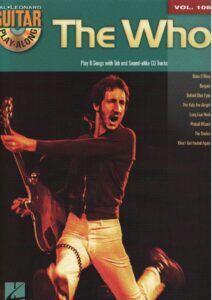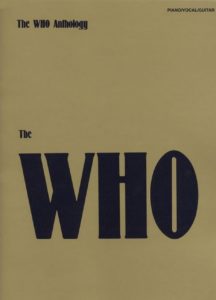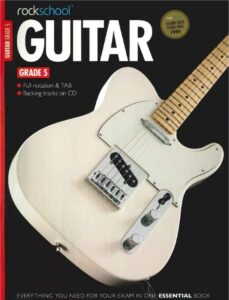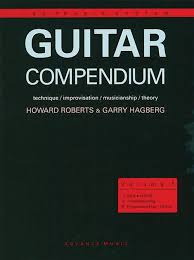Table of Contents
Come join us now, and enjoy playing your beloved music and browse through great scores of every level and styles!
Can’t find the songbook you’re looking for? Please, email us at: sheetmusiclibrarypdf@gmail.com We’d like to help you!

Please, subscribe to our Library.
If you are already a subscriber, please, check our NEW SCORES’ page every month for new sheet music. THANK YOU!
Happy birthday, Pete Townshend, born on this day in 1945.
Who is Pete Townshend?

Best Sheet Music download from our Library.
Pete Townshend: The Visionary Force Behind The Who.
Pete Townshend is one of rock music’s most innovative and influential figures. As the principal songwriter and guitarist for The Who, he shaped the sound of rock with his explosive power chords, windmill strumming, and deeply conceptual songwriting. Beyond his work with The Who, Townshend has had a prolific solo career, written essays and books, composed experimental music, and contributed to film and theater. His legacy is defined by his raw energy, intellectual depth, and relentless pursuit of artistic evolution.
This article explores Townshend’s biography, musical style, signature licks and harmonies, influences, legacy, works, filmography, discography, and essential documentaries and performances.
Biography
Early Life (1945–1964)
Born Peter Dennis Blandford Townshend on May 19, 1945, in Chiswick, London, Townshend grew up in a musical family—his father was a professional saxophonist, and his mother a singer. He studied at Ealing Art College, where he developed an interest in avant-garde music and storytelling.
In 1962, he joined The Detours, a band that later evolved into The Who with Roger Daltrey (vocals), John Entwistle (bass), and Keith Moon (drums). The band’s early performances were marked by destructive stage antics, with Townshend smashing guitars and Moon demolishing drum kits.

Browse in the Library:
Or browse in the categories menus & download the Library Catalog PDF:
Rise to Fame (1964–1978)
The Who gained fame with mod anthems like “My Generation” (1965) and the groundbreaking rock opera “Tommy” (1969). Townshend’s songwriting matured with “Who’s Next” (1971), featuring classics like “Baba O’Riley” and “Won’t Get Fooled Again.”
The band’s live performances became legendary, particularly at Woodstock (1969) and the Isle of Wight Festival (1970). However, tragedy struck in 1978 when Keith Moon died of a drug overdose, marking the end of an era.
Later Career and Solo Work (1979–Present)
After Moon’s death, The Who continued with Kenney Jones on drums and released “Quadrophenia” (1979). Townshend also pursued solo projects, including “Empty Glass” (1980) and “White City: A Novel” (1985).
The Who reunited periodically, including for The Concert for New York City (2001) after 9/11. In recent years, Townshend has focused on literary works, composing, and occasional tours with The Who.
Musical Style

Guitar Technique and Innovations
Townshend’s guitar style is raw, rhythmic, and explosive. Key elements include:
- Power Chords: He popularized the use of open-string power chords (e.g., “Pinball Wizard”).
- Windmill Strumming: A dramatic, circular strumming motion that became his trademark.
- Feedback and Sustain: He experimented with controlled feedback, shaping the sound of hard rock.
- Arpeggios and Riffs: Songs like “Baba O’Riley” feature intricate arpeggiated synth-guitar blends.
Harmony and Songwriting
Townshend’s compositions blend:
- Rock, pop, and classical structures (e.g., “Love, Reign O’er Me”).
- Mod and punk energy (e.g., “The Kids Are Alright”).
- Complex narratives, as seen in rock operas like “Tommy” and “Quadrophenia”.
Signature Licks and Songs

1. “Pinball Wizard” (1969)
- Key Lick: Open E–A–D–G chord progression with hammer-ons.
- Harmony: Mixes acoustic arpeggios with electric power chords.
2. “Baba O’Riley” (1971)
- Key Lick: Ostinato synth riff merged with violin-like guitar sustains.
- Harmony: D–A–B–F# progression, creating an anthemic feel.
3. “Won’t Get Fooled Again” (1971)
- Key Lick: Synth-driven intro, explosive E power chords.
- Harmony: Diatonic rock structure with dramatic pauses.
4. “Behind Blue Eyes” (1971)
- Key Lick: Fingerpicked acoustic intro, shifting to heavy distortion.
- Harmony: Minor-key melancholy resolving into aggressive rock.
5. “Who Are You” (1978)
- Key Lick: Syncopated riff in E, using suspended chords.
- Harmony: Blues-rock with progressive elements.
(Embed links to performances: The Who – Live at Kilburn 1977, Pete Townshend – “Pinball Wizard” Acoustic)
Influences

Townshend drew inspiration from:
- Rock ’n’ Roll: Chuck Berry, Link Wray.
- Jazz & Blues: Miles Davis, John Lee Hooker.
- Classical & Avant-Garde: Gustav Mahler, Terry Riley.
- Literature: Meher Baba (spiritual guru), Colin Wilson.
His influence extended to punk (The Clash, Sex Pistols), grunge (Pearl Jam, Nirvana), and modern rock (Foo Fighters, Green Day).
Legacy
- Invented the rock opera (Tommy, Quadrophenia).
- Pioneered synthesizers in rock (Who’s Next).
- Inspired stadium rock and punk theatrics.
- One of the greatest rhythm guitarists (Rolling Stone ranked him #10).

Works Beyond Music
Books
- “Who I Am” (2012) – Autobiography.
- “The Age of Anxiety” (2019) – Novel.
Filmography
- Tommy (1975) – Composer, actor (as “Uncle Ernie”).
- Quadrophenia (1979) – Soundtrack producer.
- The Kids Are Alright (1979) – Documentary.
Theater
- “The Who’s Tommy” (1993 Broadway adaptation).
- “Psychoderelict” (1993 solo rock drama).
Discography (Selective)
With The Who
- My Generation (1965)
- Tommy (1969)
- Who’s Next (1971)
- Quadrophenia (1973)
- Who Are You (1978)
- Endless Wire (2006)
Solo Albums
- Who Came First (1972)
- Empty Glass (1980)
- White City: A Novel (1985)
- Psychoderelict (1993)
Documentaries & Essential Videos
- The Who: The Kids Are Alright (1979) – Classic documentary.
- Pete Townshend | Broken Record – Career retrospective.
- Live at the Isle of Wight (1970) – Legendary performance.
- Behind Blue Eyes – Acoustic Session – Intimate rendition.
Pete Townshend remains a visionary artist whose impact transcends generations. From guitar-smashing rebel to elder statesman of rock, his work continues to inspire musicians and fans worldwide. Whether through The Who’s anthems, solo experiments, or literary ventures, Townshend’s genius lies in his ability to merge raw power with profound storytelling.
Please, subscribe to our Library.
If you are already a subscriber, please, check our NEW SCORES’ page every month for new sheet music. THANK YOU!
Browse in the Library:
Or browse in the categories menus & download the Library Catalog PDF:
The Who’s Tommy: A Revolutionary Rock Opera
Released in 1969, Tommy is The Who’s fourth studio album and the first full-fledged rock opera to achieve mainstream success. Conceived by Pete Townshend, Tommy tells the story of a deaf, dumb, and blind boy who becomes a messianic figure through his uncanny ability to play pinball. The album’s success led to a 1975 film adaptation, a 1993 Broadway musical, and countless reinterpretations.
This article explores:
- The story and themes of Tommy
- The music: composition, style, and standout tracks
- The 1975 film adaptation (directed by Ken Russell)
- Legacy and influence on rock and musical theater
The Story of Tommy
Plot Summary
Tommy follows the traumatic life of Tommy Walker, who witnesses his father (Captain Walker) murder his mother’s lover. His parents emotionally abuse him into a psychosomatic state of deafness, blindness, and muteness. He is tormented by his sadistic cousin Kevin and molested by his Uncle Ernie.
Tommy’s only escape is his obsession with pinball, where he becomes a savant-like champion. After a miraculous recovery (triggered by a mirror shattering), he gains a cult following as a spiritual guru. However, his followers eventually reject his teachings, leaving him isolated once more.
Themes
- Trauma and Abuse: Tommy’s condition stems from childhood trauma.
- False Messiahs: His rise and fall critique blind devotion.
- Sensory Deprivation vs. Enlightenment: His isolation leads to a twisted form of awakening.
- Rock as Salvation: Music becomes Tommy’s only means of expression.
The Music of Tommy
Musical Style & Composition
Townshend blended hard rock, psychedelia, and orchestral arrangements to create a theatrical yet raw sound. Key elements include:
- Power chords and open-string riffs (Pinball Wizard)
- Synthesizers and layered harmonies (See Me, Feel Me)
- Operatic vocal performances by Roger Daltrey
- Jazz and blues influences (The Acid Queen)
Standout Tracks
- “Overture” – A grand instrumental intro, blending orchestral and rock motifs.
- “Amazing Journey” – A psychedelic exploration of Tommy’s inner world.
- “Pinball Wizard” – The album’s most famous track, featuring iconic acoustic-electric riffs.
- “The Acid Queen” – A bluesy, hard-rock song about a drug-pushing prostitute.
- “I’m Free” – An anthemic declaration of Tommy’s liberation.
- “See Me, Feel Me / Listening to You” – A spiritual climax with soaring vocals.
- “We’re Not Gonna Take It” – A defiant rock anthem closing the opera.
(Listen to the full album here.)
The 1975 Film Adaptation
Production & Cast
Directed by Ken Russell (known for The Devils), the film starred:
- Roger Daltrey as Tommy
- Ann-Margret as Mrs. Walker (Oscar-nominated)
- Oliver Reed as Frank Walker
- Elton John as the Pinball Wizard
- Tina Turner as the Acid Queen
- Jack Nicholson as the Specialist
Differences from the Album
- More surreal visuals (e.g., baked beans, Marilyn Monroe cult).
- Additional songs: “Champagne”, “Sally Simpson”.
- Darker tone, emphasizing abuse and exploitation.
Reception & Legacy
- Mixed reviews (praised for visuals, criticized for excess).
- Cult classic status due to its bold direction and performances.
- Soundtrack album was a hit, featuring new arrangements.
(Watch the trailer here.)
Stage Adaptations & Revivals
- 1993 Broadway Musical: Won 5 Tony Awards, including Best Original Score.
- 2015 UK Tour: Starring John Entwistle’s nephew on bass.
- 2021 Symphonic Version: Orchestral reworkings by Townshend.
Legacy & Influence
- Pioneered the rock opera genre (influencing The Wall, American Idiot).
- Proved rock could be high art, merging theater and music.
- Inspired concept albums across prog, punk, and metal.
- Remains a cultural touchstone, covered by Pearl Jam, Iron Maiden, and the London Symphony Orchestra.
Tommy is a landmark in rock history, blending raw energy with deep storytelling. From its iconic music to its bizarre film adaptation, it remains a testament to Townshend’s genius and The Who’s revolutionary spirit.
Musical Breakdown of Tommy: How The Who’s Rock Opera Redefined Rock Composition
Pete Townshend’s Tommy isn’t just a story—it’s a musical revolution. By blending hard rock, classical motifs, and avant-garde experimentation, The Who created a sonic blueprint for concept albums. Below is a deep dive into the musical structures, key motifs, and compositional techniques that make Tommy a masterpiece.
1. Overall Musical Structure
Tommy is structured like a classical opera but played with rock aggression. Key features:
- Leitmotifs (recurring themes tied to characters/emotions).
- Through-composed sections (songs flow into each other, avoiding traditional verse-chorus forms).
- Dynamic shifts (soft acoustic passages explode into distorted climaxes).
Key Musical Themes
| Theme | Example Track | Purpose |
|---|---|---|
| “See Me, Feel Me” | “See Me, Feel Me / Listening to You” | Tommy’s spiritual awakening |
| “Pinball Wizard” Riff | “Pinball Wizard” | Tommy’s mastery/skill |
| “Annoying Cousin Kevin” | “Cousin Kevin” | Childhood torment |
| “The Hawker’s Call” | “Eyesight to the Blind” | Outside world’s corruption |
2. Harmonic & Rhythmic Innovations
A. Chord Progressions & Modal Shifts
Townshend avoided standard blues-rock progressions, instead using:
- Suspended chords (e.g., Pinball Wizard’s opening E–A–D–G)
- Modal interchange (mixing major/minor, e.g., Amazing Journey)
- Unresolved dissonance (The Acid Queen’s tritone-heavy riffs)
Example: “Pinball Wizard”
- Verse: E5 – A5 – D5 – G5 (open-string power chords)
- Chorus: C – G – D – A (bright, anthemic shift)
- Why it works: The dropped-D tuning gives a heavy, ringing drone, while the chorus lifts into a triumphant resolution.
Example: “See Me, Feel Me”
- Key: D Major → B Minor (modal shift for emotional weight)
- Chord Progression: D – A/C# – Bm – G (suspended tension)
B. Rhythmic Techniques
- Polymeters: “Sparks” uses 3/4 vs. 4/4 interplay.
- Syncopated Stops: “Go to the Mirror!” has abrupt pauses for drama.
- Galloping Rhythms: “We’re Not Gonna Take It” uses driving 4/4 with triplet feels.
3. Instrumentation & Textures
A. Guitar Techniques
Townshend’s playing is rhythmically aggressive yet harmonically sophisticated:
- Windmill Strumming (“Pinball Wizard”)
- Fingerpicked Arpeggios (“Christmas”)
- Feedback Manipulation (“Underture”)
B. Keyboard & Synth Layers
- Lowrey Organ: Creates church-like grandeur (“Overture”).
- Early Synths (ARP 2500): “Baba O’Riley”-style sequencers in “Underture”.
C. Rhythm Section Genius
- Keith Moon’s Drums: Jazz-inspired chaos (“The Acid Queen”).
- John Entwistle’s Bass: Counter-melodies (“Amazing Journey”).
4. Vocal Arrangements
- Roger Daltrey’s Range: From snarling rage (“Cousin Kevin”) to angelic highs (“See Me, Feel Me”).
- Harmony Stacks: “Christmas” uses The Who’s trademark gang vocals.
5. Standout Tracks: A Musical Analysis
A. “Overture”
- Structure: Sonata-like (intro, exposition, recapitulation).
- Instruments: Orchestral rock fusion (Mellotron, piano, power chords).
- Purpose: Introduces leitmotifs heard later (“See Me, Feel Me”, “Pinball Wizard”).
B. “Amazing Journey”
- Key Shift: E Minor → G Major (symbolizing Tommy’s inner journey).
- Guitar Tone: Leslie speaker effect for psychedelic swirl.
C. “The Acid Queen”
- Blues Scale: E Minor Pentatonic + tritone (devil’s interval).
- Rhythm: Stop-start funk groove (Moon’s drum fills drive tension).
D. “I’m Free”
- Chord Progression: D – A – Bm – G (optimistic, uplifting).
- Vocal Melody: Pentatonic-based, anthemic.
6. Legacy: How Tommy Changed Music
- Prog Rock: Inspired Genesis, Pink Floyd.
- Punk Energy: The raw power influenced The Clash, Green Day.
- Modern Rock Operas: American Idiot (Green Day), The Black Parade (MCR).
7. Where to Hear Key Moments
- “Pinball Wizard” (Live at Isle of Wight 1970) – Definitive live version.
- “The Acid Queen” (1975 Film Version) – Tina Turner’s explosive take.
- “Underture” (Studio Version) – Instrumental masterpiece.
Tommy isn’t just an album—it’s a guitar symphony, a rhythmic labyrinth, and a harmonic revelation. Townshend’s genius lies in making complex music feel primal. Whether through earth-shaking power chords or delicate arpeggios, Tommy remains the blueprint for rock ambition.
Want more? Dive into:
- The Quadrophenia harmonic breakdown.
- Townshend’s acoustic demos vs. final recordings.
- How Tommy influenced film scoring.
